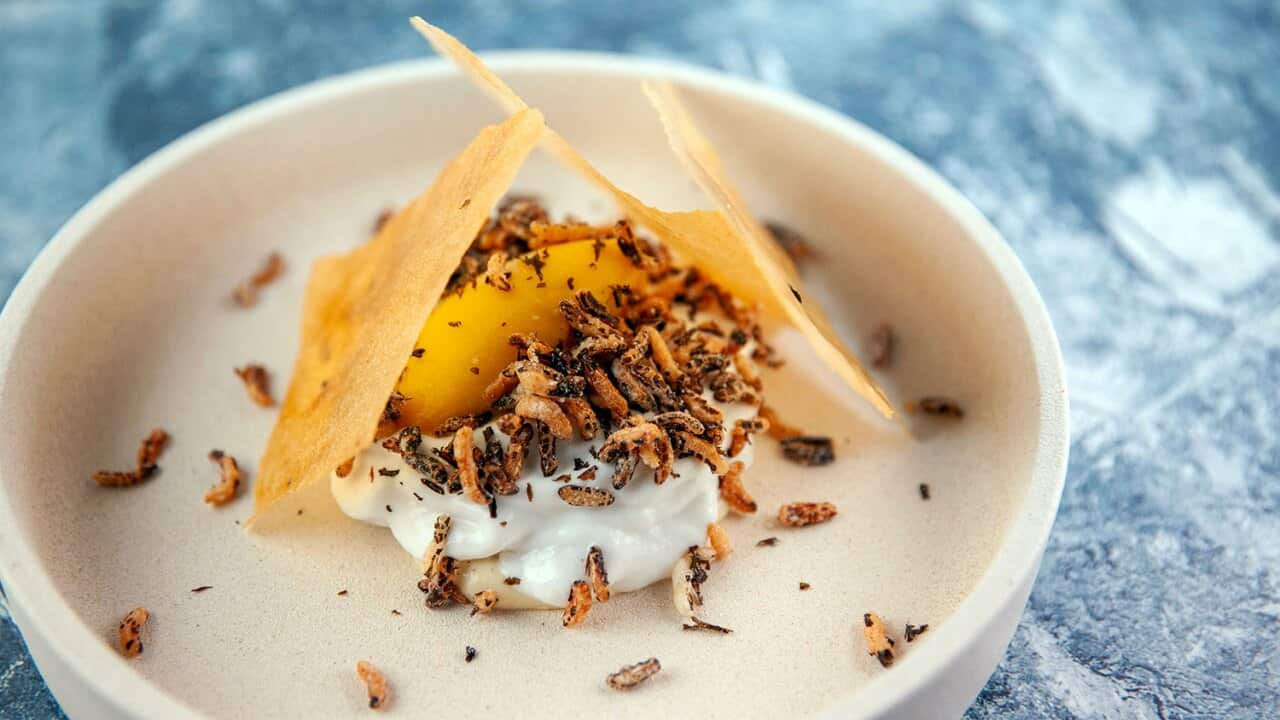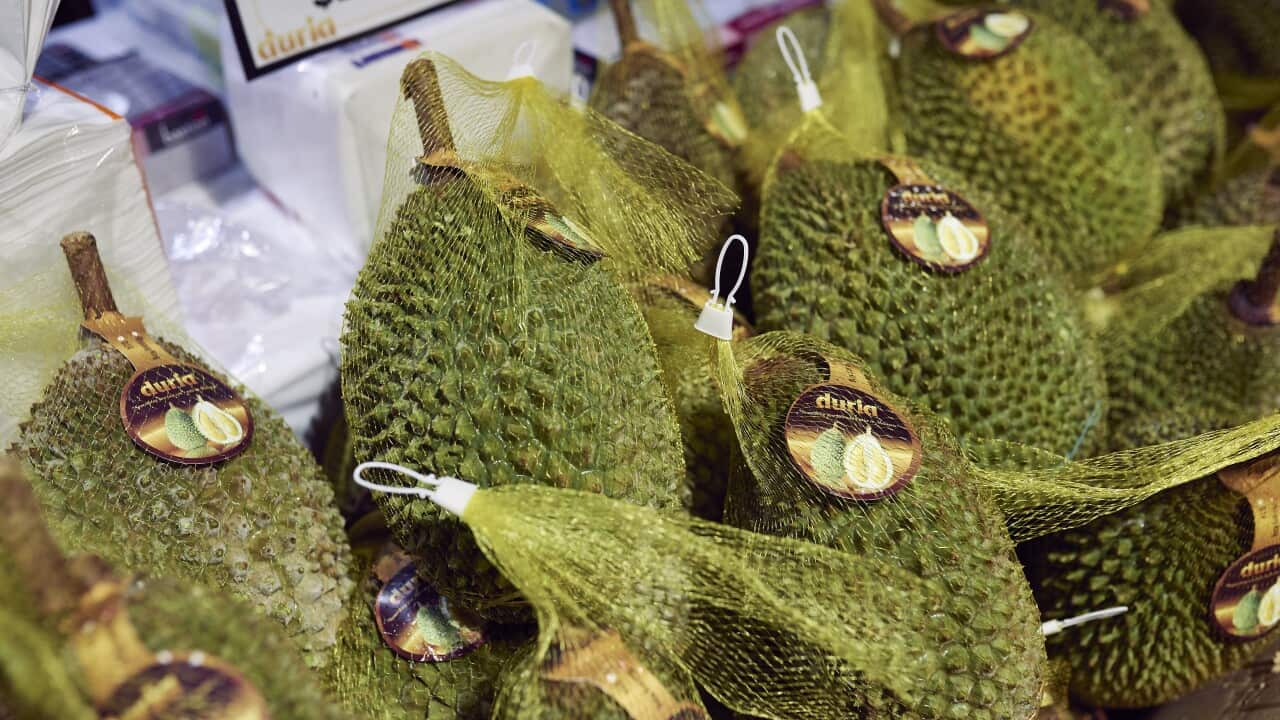When Sydney-based Zona Tan-Sheppard asked on Facebook whether a fellow Malaysian would like to share a box of durians with her, she never expected her post to blow up. One 20kg box snowballed into 400kg's worth, and this is how began.
It was only after moving to Australia in 2007 that Tan-Sheppard realised how much she missed the tastes of her childhood, including her favourite tropical Southeast Asian fruit: durian, also known as the King of Fruit. Biosecurity regulations prevent the importation of fresh, whole durian in Australia, so most from overseas are sold frozen.
However, Tan-Sheppard found one durian grower in Darwin that had been growing Malaysian seedling durians since the 1990s, giving her the rare opportunity to eat them here fresh. She became friends with Han Shiong Siah of , who taught Tan-Sheppard how to spot the difference between each of the Malaysian seedlings by fruit shape, thorn size, weight, smell and feel.
"When I was tasting them, it just brought flashbacks of me sitting down in the living room, my dad peeling the fruit, naturally enjoying each and every morsel," Tan-Sheppard says of her experience eating fresh durian for the first time in over a decade.
When Tan-Sheppard discovered that Tropical Primary Products supplied to a stall at the Sydney Market, she was excited to share durian with friends and family. She asked her Facebook community of Malaysian migrants if anyone wanted some. The response far exceeded her expectations and Tan-Sheppard's 3am trip to the market turned into a full-day durian delivery across Sydney.
It wasn't long before Tan-Sheppard began buying other Australian-grown Southeast Asian fruit, including rambutans, mangosteens and pomelos, and voluntarily distributing them to her community. This is when Siah suggested that she turn her tropical fruit concierge service into a business.
When I was tasting them, it just brought flashbacks of me sitting down in the living room, my dad peeling the fruit, naturally enjoying each and every morsel.
"It's been a huge awareness and eye-opening experience for my customers, my friends, and myself," she says. "One of my objectives is to keep growing the market because if nobody knows that we grow all of this in Australia, no one's going to buy them."
On top of educating customers, Tan-Sheppard aims to do durian justice by ensuring people are not cheated by local grocers who sell any durian as Musang King (a type of durian) when it's not.
The best time to purchase fresh durians in Australia is from October to December when they are in season. The sulphuric characteristic of durian is more pungent in fresh varieties, and when eaten raw, has a creamy, custard-like texture.
"Durian is the only fruit where it's both sweet and savoury at the same time, so the description of an onion-y custard is a complete paradox in itself," Tan-Sheppard explains.
When buying imported whole durian from your local Asian grocer, Tan-Sheppard advises purchasing it directly from a freezer and not from produce shelves at room temperature.
"The best way to thaw frozen durian is inside the fridge overnight," she explains. "The fridge allows the durian moisture to evaporate instead of being absorbed back inside the husk, which would cause the durian flesh to become watery."
Once thawed, the durian can be opened to extract the fruit arils, which can then be stored for up to a week in a clean, dry airtight container lined with a paper towel.
"As durians naturally emit gas, this would create condensation in the fridge," Tan-Sheppard explains. "The kitchen towel will absorb moisture and lengthen the lifespan of your durian." Durian flesh becomes bad when it begins to smell or taste sour, indicating it has naturally fermented.
Make Zora's durian curry

Malaysian fish cooked in fermented durian curry (gulai tempoyak ikan)
"Instead of throwing it away, remove the seed and make the flesh into tempoyak [fermented durian paste] by adding salt," she advises. "This makes an incredibly flavourful gravy with umami or as a condiment when blended with chillies with sambal."
Having access to fresh durians and other rare Southeast Asian fruits grown in her new home soil evokes a sense of nostalgia for Tan-Sheppard. They are memory triggers for many of her customers and she is proud to give them the taste of home that they dearly miss.
The Thorny Fruit Company has delivered fresh rare tropical fruit and Asian vegetables to houses across Sydney and it was only this month that Tan-Sheppard had to put her business on hold due to her other work commitments and juggling two jobs. She hopes to relaunch in a couple of months' time. "I have plans for The Thorny Fruit Company in another iteration. Not as it was, but hopefully something better."
Malaysian fermented durian paste (tempoyak)
Tempoyak has long been used by the ethnic Malay community in Malaysia as a culinary staple during the durian season. This fermented durian paste transforms into sambal when blended and sauteed with chillies, or an umami-filled dish called gulai tempoyak.
Ingredients
- 250 g de-seeded durian flesh
- 15-20 g salt
Method
1. Extract the durian flesh. It doesn't matter whether the durian is purchased fresh or frozen for this recipe. For this recipe, ensure the durian flesh is at room temperature if originally frozen.
2. Add salt to extracted flesh, then mash and mix thoroughly to ensure the salt is evenly combined.
3. Store salted durian flesh in a sterilised, sealed glass jar.
4. Let the durian ferment at room temperature for 5-7 days, allowing it to breathe once a day. The fermentation process at room temperature can continue for up to 2 weeks if a stronger ferment is preferred.
ALL THINGS DURIAN

Mango sorbet, durian creme and coconut foam ('Dury wat')







